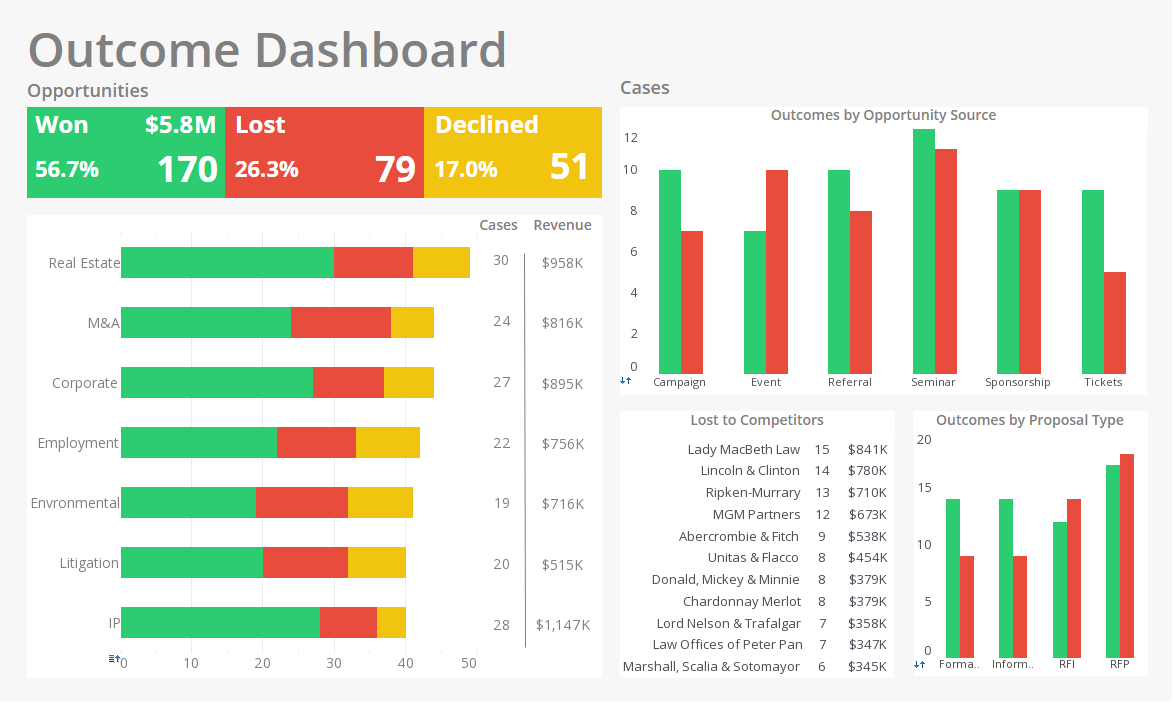Report Designer Download
InetSoft's StyleBI software provides users with many options for enterprise-level reporting.
Information is represented through tables, charts, and a set of advanced report components. Each component can be modified with individual data binding, formatting, and display properties.
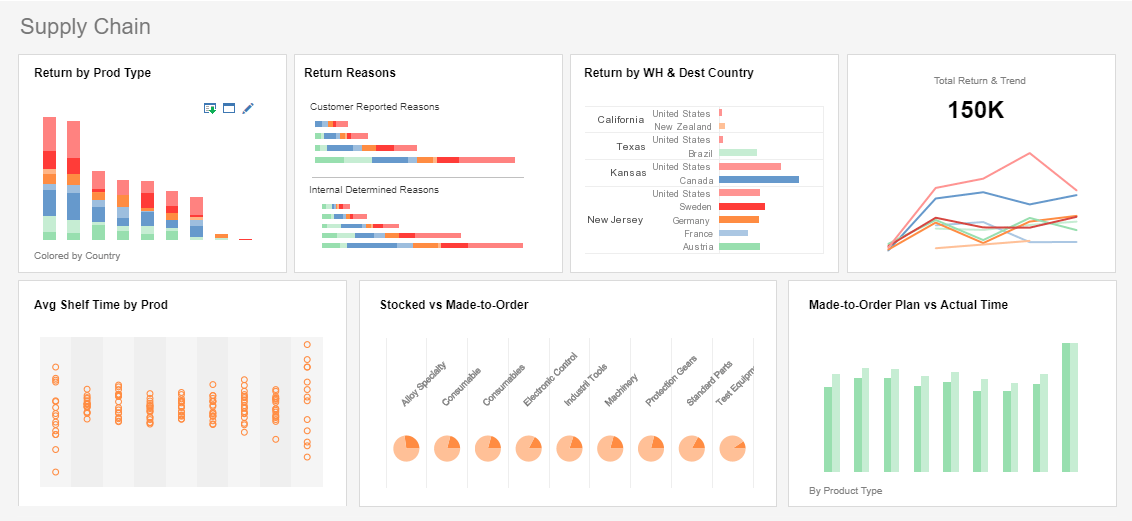
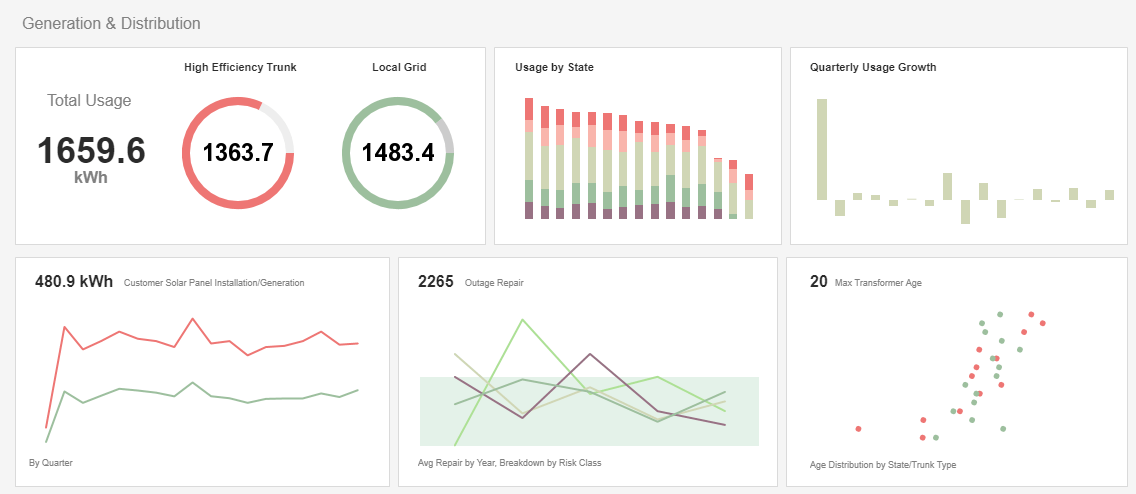
InetSoft's Multi-Layered Reporting Solution
StyleBI offers users two different report layouts, flow and tabular, for high-level customization.
The flow layout treats report design like word processing. The report designer can place elements into the report that directly flow from one area to the next. These sections can then be ordered to specify how data flows. The flow layout allows users to create a report with multiple columns and/or segmentations.
The tabular design layout it completely unique to StyleBI. Report designers can divide a report into cellular divisions, similar to how HTML development tools often function.
Using the tabular layout, talented report designers can have a greater degree of control than that of designers using the flow layout. Cells can be used to place report elements anywhere in the report.
InetSoft's Reporting Elements
StyleBI utilizes a combination of tables, charts, and sections to display data.Tables can display data in a standard row/column format, or a not-so-standard multidimensional crosstab format.Charts can display data visually, and users can choose from any of over thirty charts styles.
Sections are extremely versatile elements that allow report designers to place data very precisely. The section element is composed of a header, content, and footer layer that each handles data differently.
Each report element is a self-contained entity with its own data binding and display properties, meaning that a report can have many different elements that each display different data from a different view.
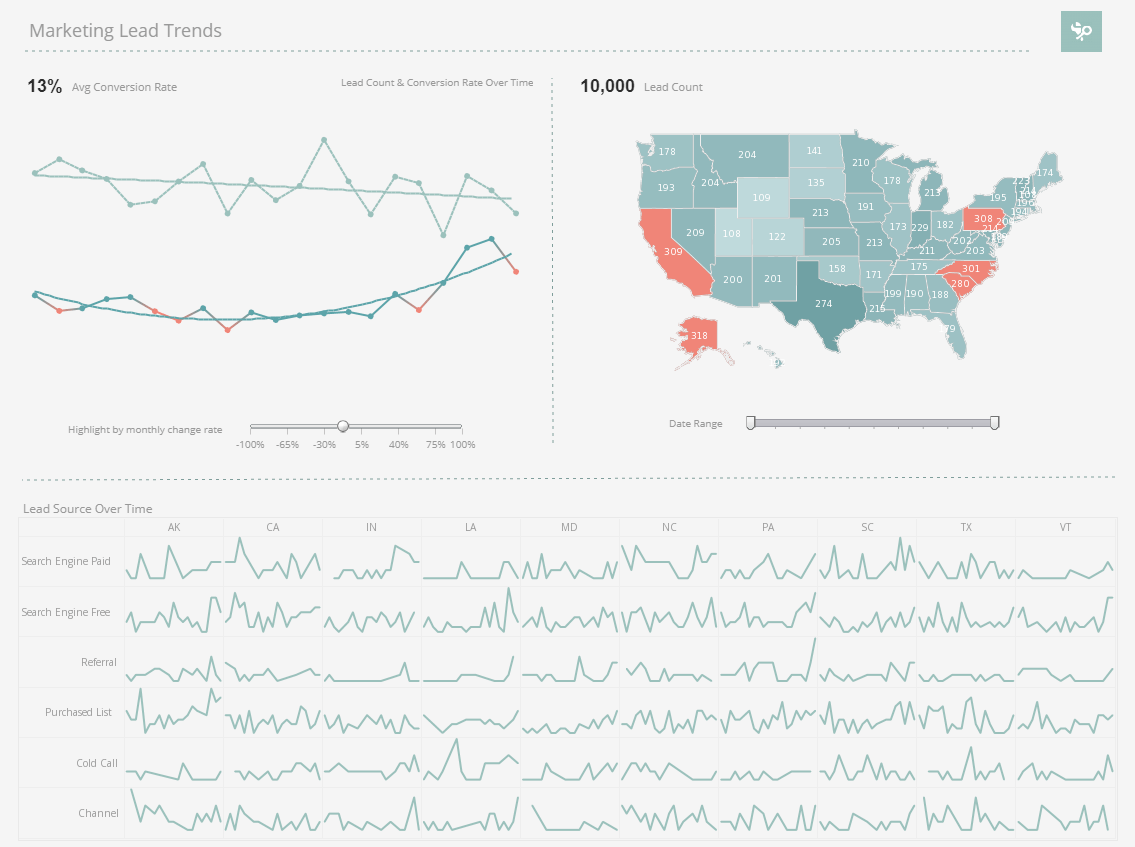
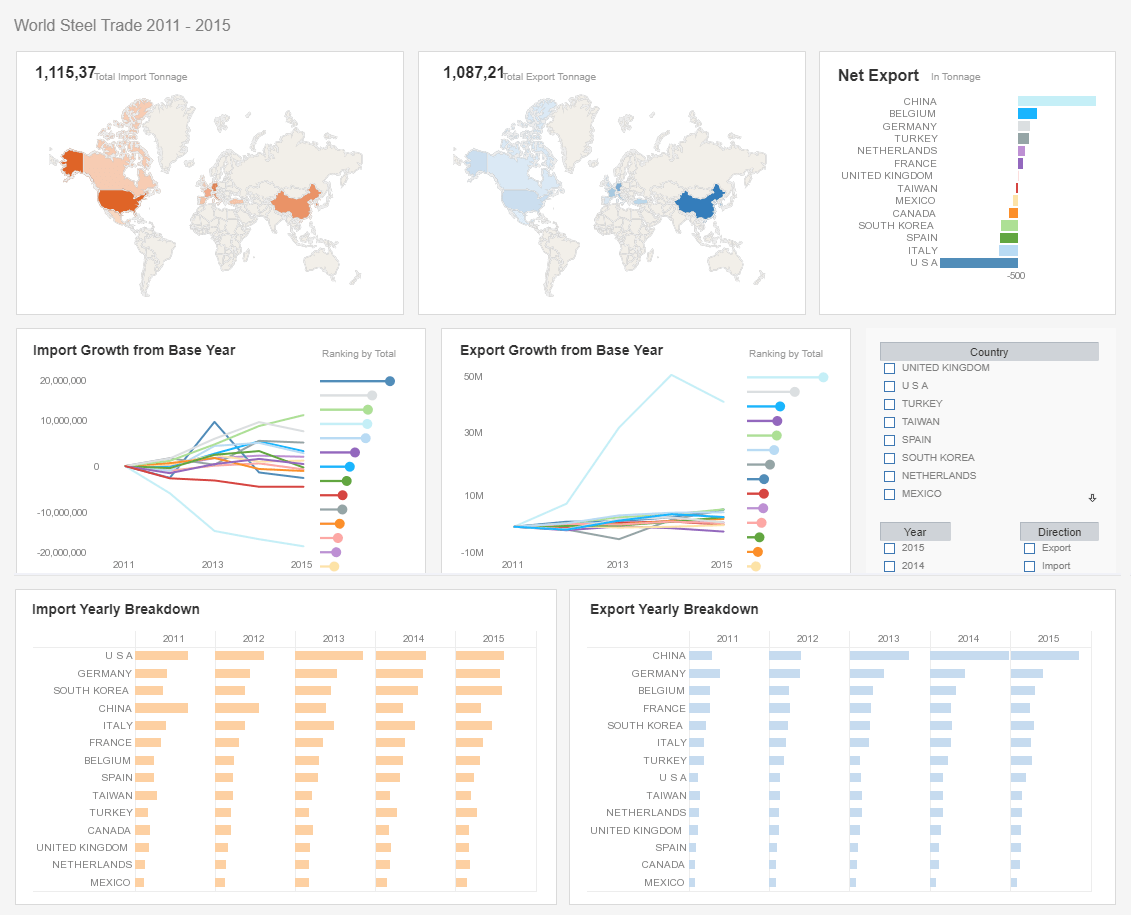
StyleBI at a Glance
StyleBI offers a very flexible and efficient reporting solution with regard to reusability and common element sharing between designer and developers.
By providing reusable components such as meta-templates, report beans, parameter sheets, and a scripting library that can all be shared through a central component library, StyleBI provides users with a flexible and robust solution for a development team of any size.
These components give developers the features they need while reducing development time and shortening time to market.
How an Earthen Clayworks Switched from Acumatica Report Designer to InetSoft
Earthan Clayworks, a family-owned company specializing in the revival of traditional earthen building materials, operates in one of the most obscure yet culturally significant industries in the world. The company produces clay-based plaster, adobe bricks, and rammed-earth construction components for sustainable building projects. Although the craft itself dates back thousands of years, Earthan Clayworks faces the modern challenges of scaling production, meeting regulatory requirements, and satisfying the demands of eco-conscious architects and contractors. For years, the company used Acumatica Report Designer to handle its reporting needs, particularly around inventory, sales, and compliance documentation. While Acumatica served as a practical tool for generating basic reports from their ERP system, it fell short in flexibility, integration, and presentation. Seeking a more comprehensive solution that could unify diverse data sources and present insights in a way that resonated with both internal teams and external stakeholders, Earthan Clayworks made the decision to switch to InetSoft. The transition marked a turning point in how the company monitored its operations, understood performance, and communicated its value.
One of the most pressing challenges for Earthan Clayworks was the fragmented nature of its data. Clay production requires careful tracking of raw materials, water usage, curing times, and weather conditions, all of which impact product quality. In addition, the company had to monitor orders, shipping schedules, financial performance, and sustainability metrics such as carbon footprint and waste reduction. Acumatica Report Designer was tightly bound to its ERP data and required significant manual work to bring in outside datasets. As a result, employees were often left juggling spreadsheets and manually updating reports, which consumed time and introduced errors. InetSoft provided an immediate improvement by offering a data mashup capability that integrated information from ERP, spreadsheets, IoT sensors monitoring curing environments, and even third-party sustainability platforms. Suddenly, Earthan Clayworks had a unified view of operations that eliminated silos and created opportunities for deeper analysis.
Another limitation of Acumatica Report Designer was its static nature. Reports were generated on a schedule, often taking days or weeks to compile, and once distributed, they could not be easily adjusted by the recipients. This rigidity was especially problematic for managers who needed timely updates to make operational decisions. For instance, if a batch of clay bricks was not curing properly due to humidity fluctuations, managers might not learn about the issue until long after the fact. InetSoft changed this dynamic by enabling real-time dashboards that could be accessed by both production staff and management. Now, if curing metrics began to deviate from acceptable ranges, alerts were automatically triggered and displayed in dashboards, allowing for immediate corrective action. This real-time visibility transformed how the company managed production, reducing waste and ensuring consistent product quality.
From a customer-facing perspective, InetSoft also offered advantages that Acumatica could not match. Earthan Clayworks serves a clientele that includes eco-architects, sustainable construction firms, and heritage restoration organizations. These customers are deeply invested not only in the end product but also in the transparency of the process. With Acumatica, the company struggled to communicate project progress or provide detailed reports beyond basic order confirmations and invoices. InetSoft allowed Earthan Clayworks to create interactive, professional-grade dashboards that customers could access through secure portals. For example, an architect overseeing the use of clay plaster in a sustainable housing project could log in and see metrics about delivery timelines, carbon savings compared to traditional materials, and even photos from the production floor. This kind of transparent reporting strengthened trust and reinforced Earthan Clayworks’ brand as a leader in sustainable building.
Financial management also improved significantly with the switch. While Acumatica Report Designer could generate reports tied to invoices and revenue, it lacked flexibility in combining financial data with operational performance. InetSoft allowed Earthan Clayworks to integrate production data with cost and revenue metrics, making it possible to calculate profitability at a much more granular level. For example, the company could now track the profitability of individual product lines, such as adobe bricks versus earthen plaster, or compare performance across different geographic markets. This allowed leadership to make informed decisions about resource allocation, pricing strategies, and future product development. By connecting financial data directly to operational accomplishments, InetSoft ensured that profitability analysis was no longer an abstract accounting exercise but a real-time strategic tool.
Internally, the transition to InetSoft created a cultural shift in how accomplishments were recognized. In the past, the contributions of production staff often went unnoticed because reporting focused on financial or logistical outcomes. With InetSoft, managers could design dashboards that highlighted operational milestones, such as record-low waste levels during production or the successful completion of a complex curing cycle. These dashboards were displayed on screens in the production facility, making accomplishments visible to everyone. This practice not only boosted morale but also created a stronger sense of teamwork, as employees could see how their daily efforts contributed to broader organizational goals. Recognition became data-driven, consistent, and immediate, fostering a culture of accountability and pride.
One of the most innovative applications of InetSoft was in compliance and sustainability reporting. Earthan Clayworks operates under strict regulations regarding environmental impact, particularly because it sources clay and aggregates from natural sites. Regulators required detailed reports on resource usage, emissions, and land restoration efforts. With Acumatica, compliance reporting was a tedious process that often required weeks of manual data collection and formatting. InetSoft streamlined this dramatically by automatically pulling data from sensors, production logs, and financial records to create compliance dashboards. These dashboards could be easily exported into formats required by regulators, cutting reporting time by more than half. Beyond meeting requirements, InetSoft’s tools enabled Earthan Clayworks to go further by showcasing its sustainability achievements to customers and investors, strengthening its market position in an eco-conscious industry.
Another powerful feature of InetSoft was predictive analytics, which opened new doors for Earthan Clayworks’ planning capabilities. By analyzing historical data on curing times, weather patterns, and production yields, the company could forecast future challenges and opportunities. For instance, InetSoft could predict how seasonal humidity levels might impact brick curing efficiency, allowing managers to adjust schedules or implement preventative measures. Similarly, demand forecasting became more accurate by integrating historical sales data with broader construction industry trends. This predictive capability gave Earthan Clayworks a strategic edge, allowing it to anticipate and prepare for shifts rather than merely reacting to them. Acumatica’s Report Designer lacked the advanced modeling features to support this level of insight, leaving Earthan Clayworks at a disadvantage until InetSoft filled the gap.

Externally, the adoption of InetSoft positioned Earthan Clayworks as a technological innovator in an otherwise tradition-bound industry. Many competitors still relied on static reporting tools or manual spreadsheets, which limited their ability to engage customers or optimize operations. By contrast, Earthan Clayworks could provide interactive dashboards, real-time updates, and predictive insights, all of which appealed to modern construction partners who valued both sustainability and efficiency. This differentiation helped Earthan Clayworks win larger contracts and expand into new markets, particularly in urban areas where green building initiatives were gaining traction. The company’s ability to back up its sustainability claims with hard data presented through InetSoft dashboards was a key factor in securing these opportunities.
Of course, switching from Acumatica Report Designer to InetSoft was not without hurdles. Training was required, particularly for staff who were used to the older system’s simple, static reports. Initially, some employees worried that InetSoft’s more advanced features would be overwhelming. However, InetSoft’s user-friendly interface and focus on self-service analytics eased the transition. The company’s leadership also invested in creating a support culture around the new system, with “data champions” in each department helping colleagues learn and experiment. Over time, adoption rates increased, and employees began to appreciate how InetSoft made their jobs easier and more impactful. Instead of spending hours preparing reports, they could focus on interpreting results and making improvements.
Ultimately, Earthan Clayworks’ switch from Acumatica Report Designer to InetSoft represented far more than a software upgrade—it was a transformation in how the company approached data, reporting, and decision-making. InetSoft empowered the company to integrate diverse datasets, provide real-time insights, recognize accomplishments, and communicate transparently with customers and regulators. These capabilities improved efficiency, boosted morale, and gave Earthan Clayworks a competitive advantage in a highly specialized field. Most importantly, the move aligned perfectly with the company’s mission of sustainability, as data-driven insights helped reduce waste, optimize resource usage, and showcase environmental benefits. In a world where both tradition and innovation matter, Earthan Clayworks proved that even the most obscure industries can harness modern business intelligence tools to thrive.
